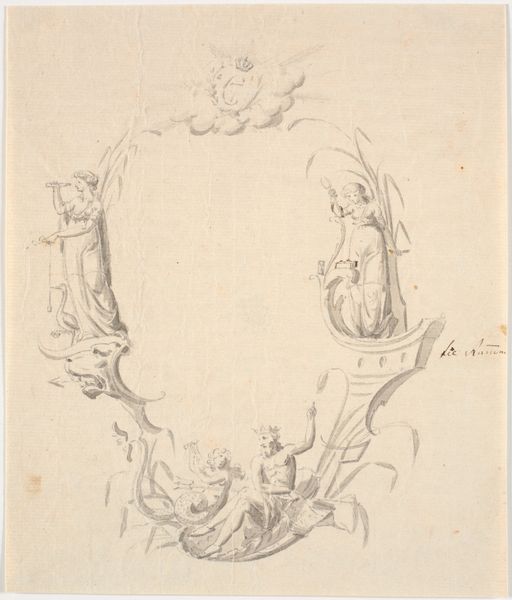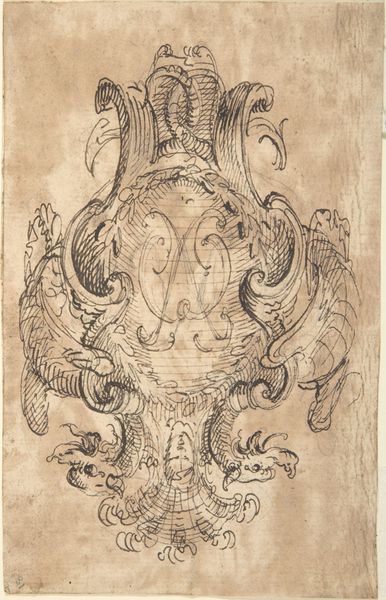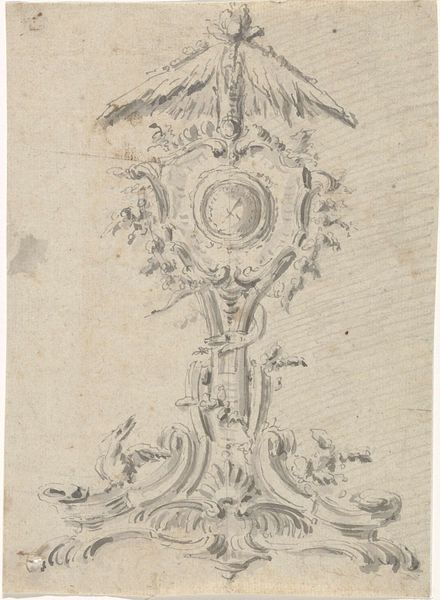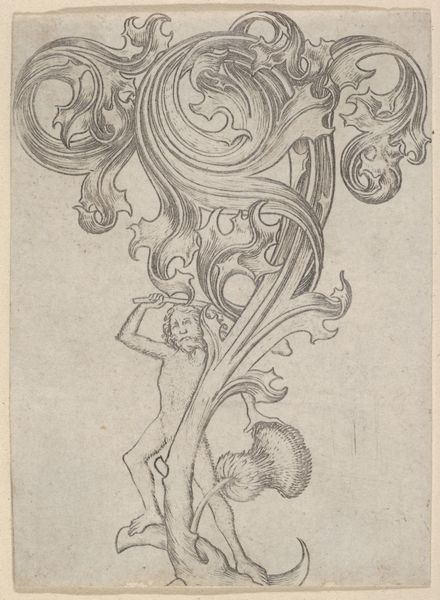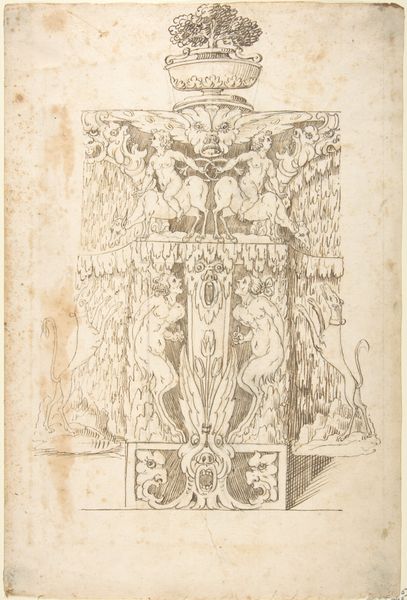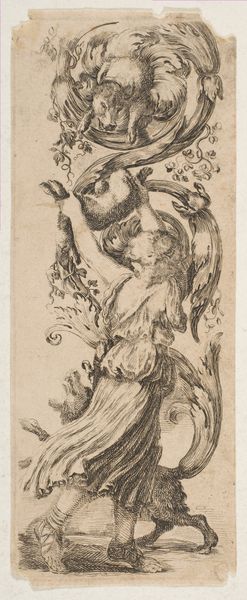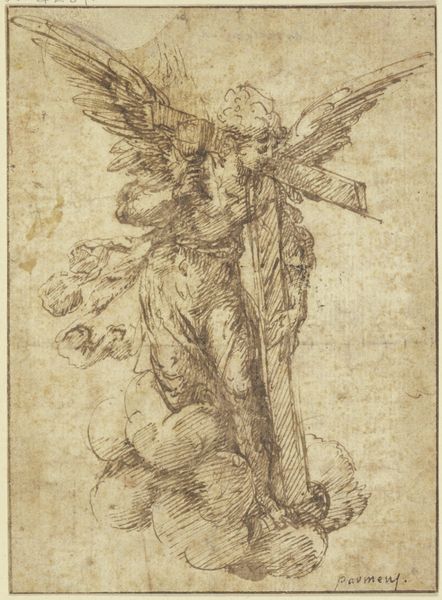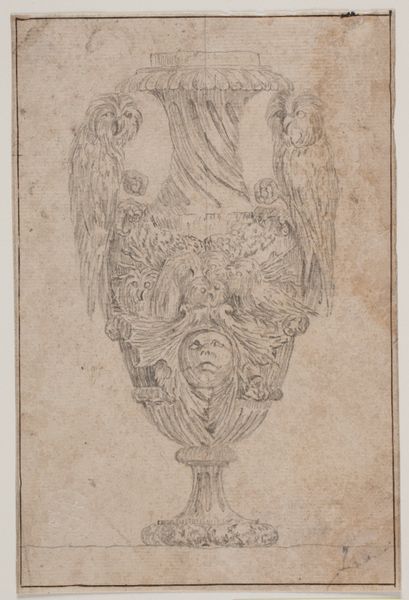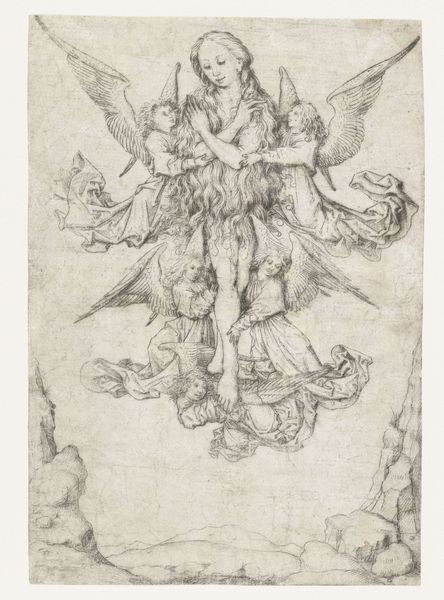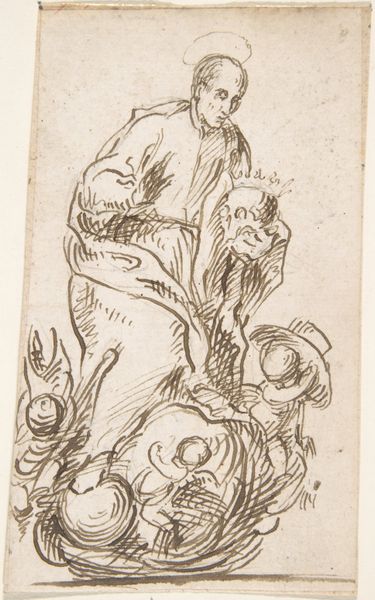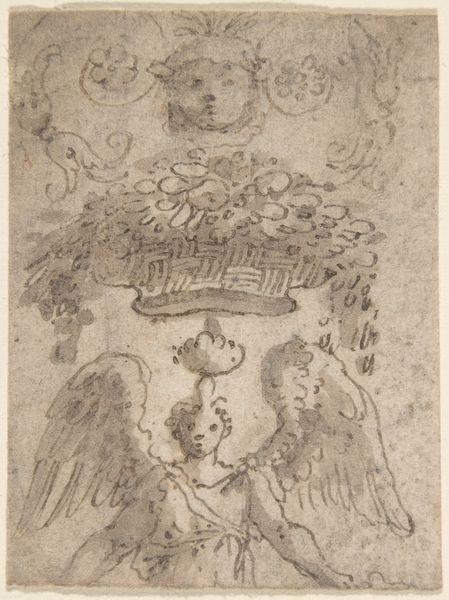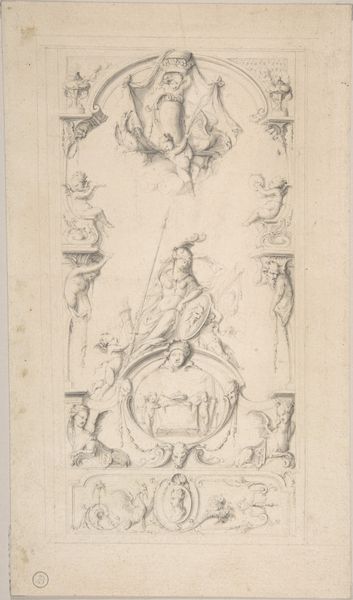
drawing, pen
#
drawing
#
toned paper
#
light pencil work
#
baroque
#
pen drawing
#
pen sketch
#
pencil sketch
#
figuration
#
ink drawing experimentation
#
pen-ink sketch
#
pen work
#
sketchbook drawing
#
pen
#
history-painting
#
sketchbook art
Dimensions: overall: 42.3 x 23.7 cm (16 5/8 x 9 5/16 in.)
Copyright: National Gallery of Art: CC0 1.0
Curator: Here we have what's known as "A Monstrance with Two Angels Supporting a Chalice." It is an unsigned drawing, a pen and pencil sketch rendered on toned paper attributed to Giovanni Battista Foggini, and from the Baroque period. Editor: Okay, right away, it feels so ethereal. I mean, look at the lightness of the line, the way it dances across the page! The angels almost float, right? There is an overwhelming sensation of otherworldliness. Curator: Absolutely. Foggini’s choice of medium contributes greatly to that effect. Pen and pencil on toned paper softens the intensity often associated with religious iconography. Considering Foggini’s broader work and the period in question, these sketches served not just aesthetic but also social and political functions, reinforcing power structures. Editor: Power structures even in a sketch? Hmm. Well, beyond the possible intentions of the patron class, as an artist, I’m just struck by the dynamism. It is amazing how much detail and depth he's able to get with the layering and the shading. Curator: Notice the multitude of cherubic faces surrounding the chalice and the radiance emanating outwards. The angel figures, though supporting the monstrance, are actively engaged in lifting the sacrament towards…what? Towards the light, towards a higher power. Their strength is not just physical, but deeply spiritual. Consider also the placement of children undergirding the overall composition. What does this say about cycles of life and belief? Editor: What does it say about cute baby butts? Haha, joking! Seriously though, the whole design is super ornate. But the quick, flowing lines keep it from feeling heavy or stuffy, at least to me. Maybe it's also the rawness of the sketch itself. The visible underdrawing really speaks to the process, like catching the artist in a moment of thought. Curator: Precisely. It humanizes what could easily become cold religious dogma. The materiality speaks of process and that allows viewers an entryway, a space to consider their own connections or disconnections to faith and power, even today. Editor: Yeah, it’s that raw vulnerability mixing with grand spectacle that makes it feel alive. I feel inspired. I might actually head back to the studio right now! Curator: Indeed. Foggini offers us a glimpse not only into religious symbology and its relationship to societal power dynamics but also into the enduring power of artistic creation to evoke both reverence and reflection.
Comments
No comments
Be the first to comment and join the conversation on the ultimate creative platform.
